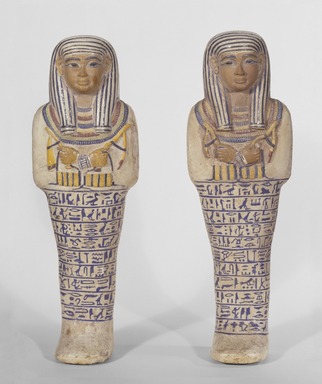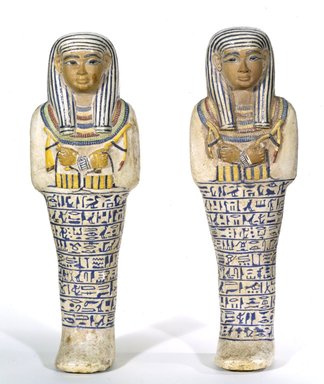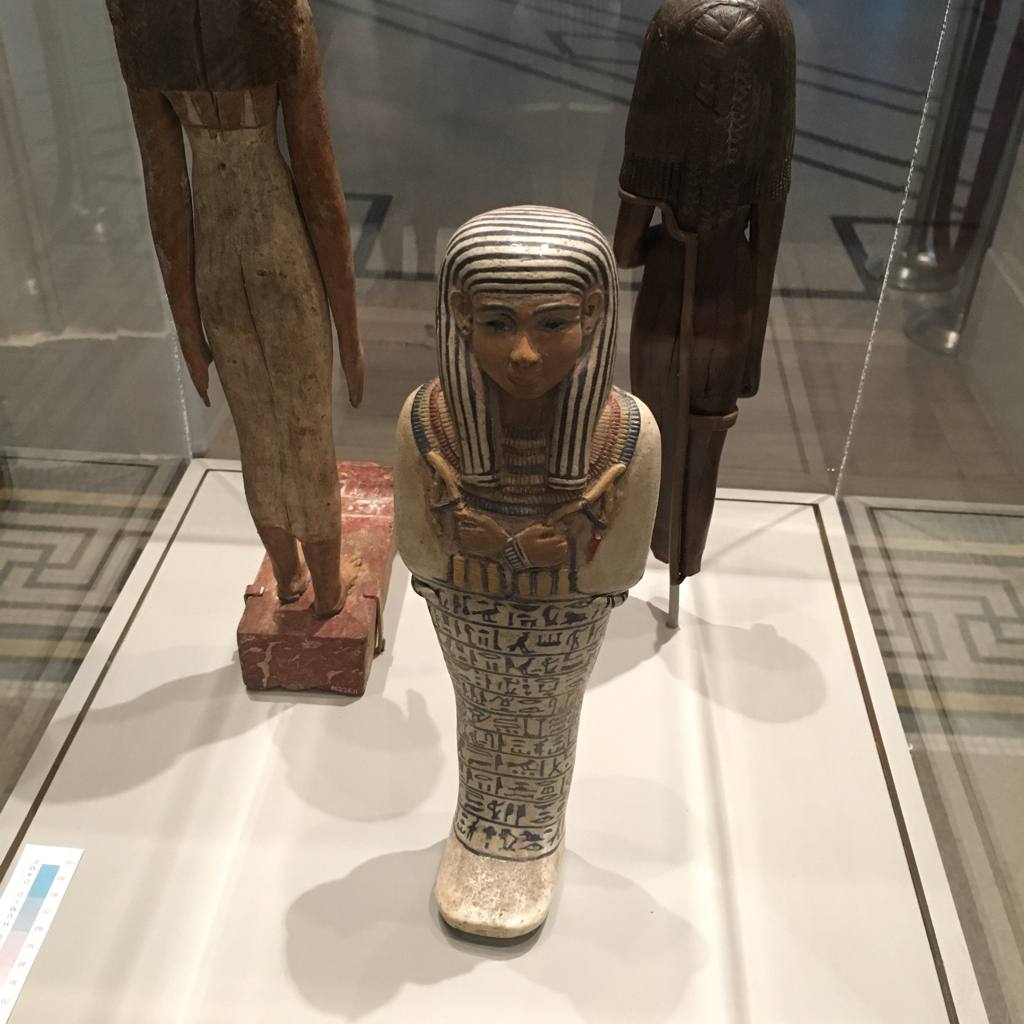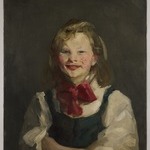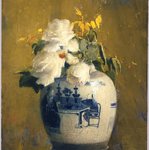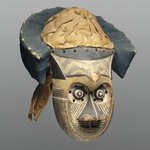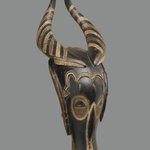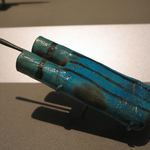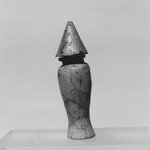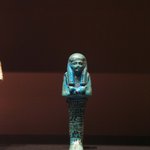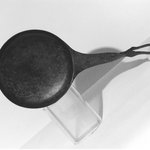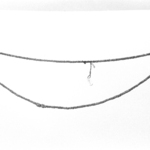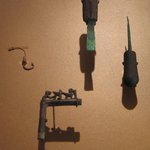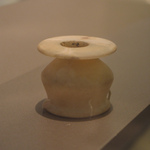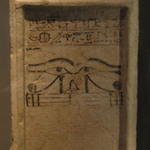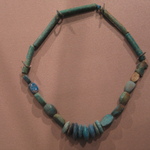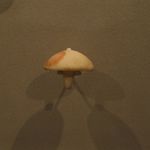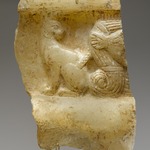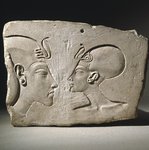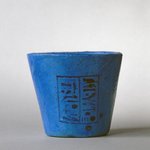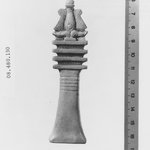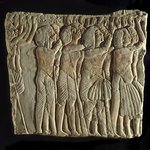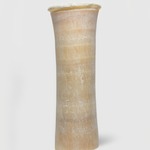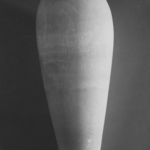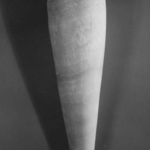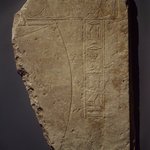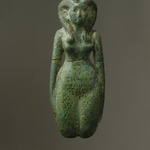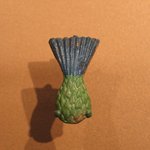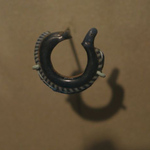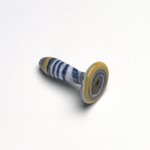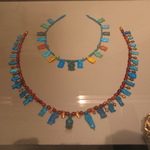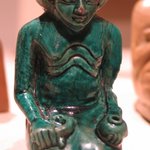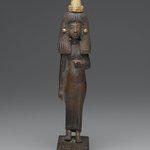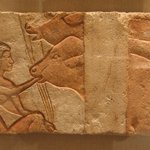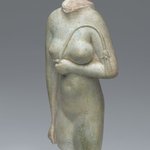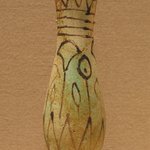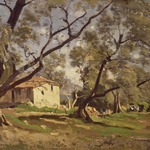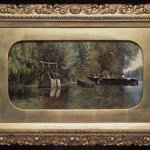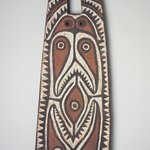Do you know if this is the original coloring of this shabti? I have never seen one in such beautiful condition and I am wondering if any conservation or restoration has been done on it.
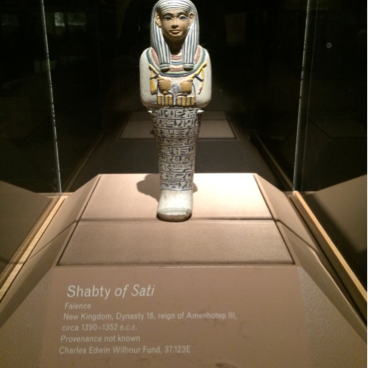
That is a beautiful piece! It's made of faience, a type of glazed mineral ceramic.
This dynasty was especially known for its opulence. I don't have access to the full conservation records so I can't say definitively, but my understanding is that the colors are original. In any case, it's considered an exceptional example of shabti.
It really is! The 18th Dynasty was a pretty impressive time, but even for the New Kingdom this is amazing.
We often refer to the cartonnage of Nespanetjere as a really fine example of an object whose colors have been well-preserved, with such detailed imagery.
I'll keep my eyes open for that, thanks! The objects in this collection are in great condition, it's hard to believe it's so well preserved. I'm already cajoling friends into making a return trip.
We do have a major Egyptian collection. I've only been here since March, so I'm still learning about it! Our Egyptian curators have been very generous with their knowledge and time.
Why was this woman's hair so long?
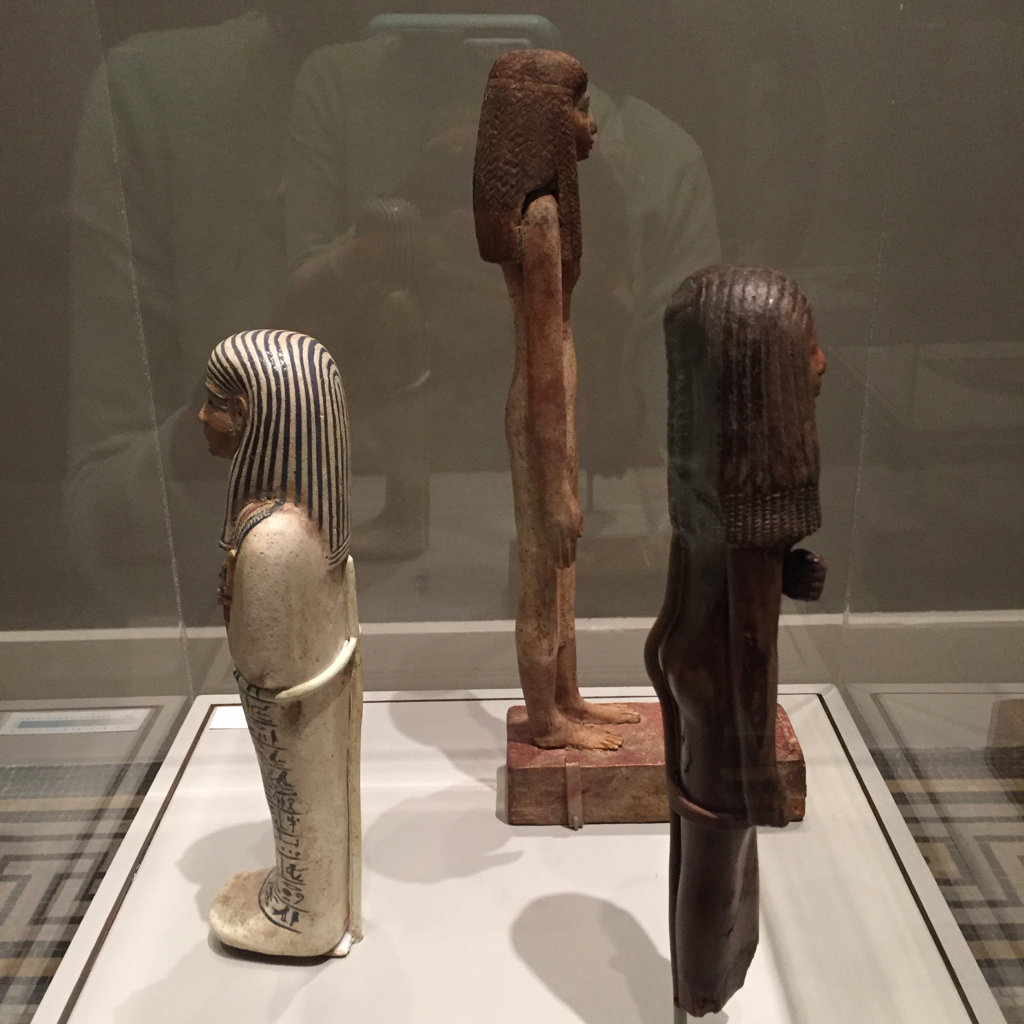
These are long wigs, which were seen as a sign of beauty in ancient Egypt. Elaborate wigs held sexual appeal. Both men and women paid a lot of attention to caring for the body. Hair was plucked, oiled, shaved and otherwise groomed.
Nearby you can see a wooden comb once used to care for wigs!
What tools were used to create this piece?

The primary tools would have been a mold and fire. This shabty is made of a material called faience. Faience is a quartz-based paste that was molded and fired at high temperature, similar to a ceramic. Each of the colors had to applied separately; this was an unusual and costly method of shabty production.
What purpose did this object serve?
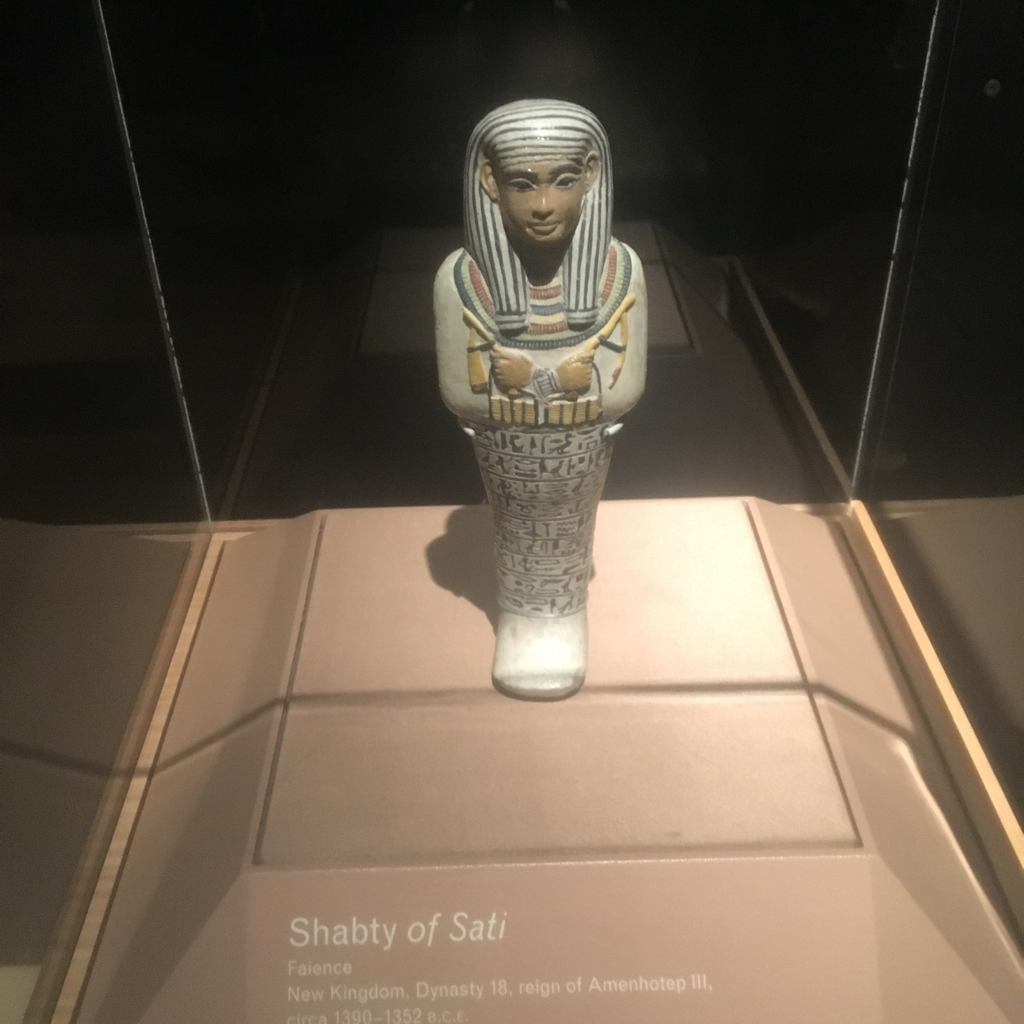
Shabties were part of the funerary equipment in ancient Egypt. In ancient Egyptian religious beliefs, the afterlife was very similar to the current life, which meant that the tasks that need to happen here would continue in the afterlife. Shabties were made to help the deceased with work in the afterlife. We can tell that this shabty belonged to a wealthy person because it's large and beautifully decorated.
What is a shabty and what does it have to do with a tomb?

The word Shabty refers to a funerary figurine like this one. The word comes from the ancient Egyptian term for “the one who replies.” Shabties would be placed in tomb and were believed to come to life and perform tasks on behalf of the deceased in the afterlife.
Did the image on the shabty vary based on who's tomb it was placed inside?

A little. They were fairly standardized (we have several more on view throughout the Egyptian galleries). The way that a shabty was individualized was through the inscription. Ancient Egyptians believed in the power of writing. By placing an inscription naming a person on a work, it would become a portrait/image of that person.
The main ways in which shabties varied was in the quality and fashion. Wealthy individuals could afford higher quality, larger, and more individualized ones. Middle class individuals could buy simple mold-made, mass produced shabties. Changing trends in wigs and headdresses also manifest in shabty design.
Were all these three statues Sati?

Only one of them is a shabty for Sati. The colorful one with inscriptions. The wooden statues served a different purpose, but were likely entombed with a deceased as part of their funerary equipment.
Oh I see.
Are these decorative pieces for their homes?
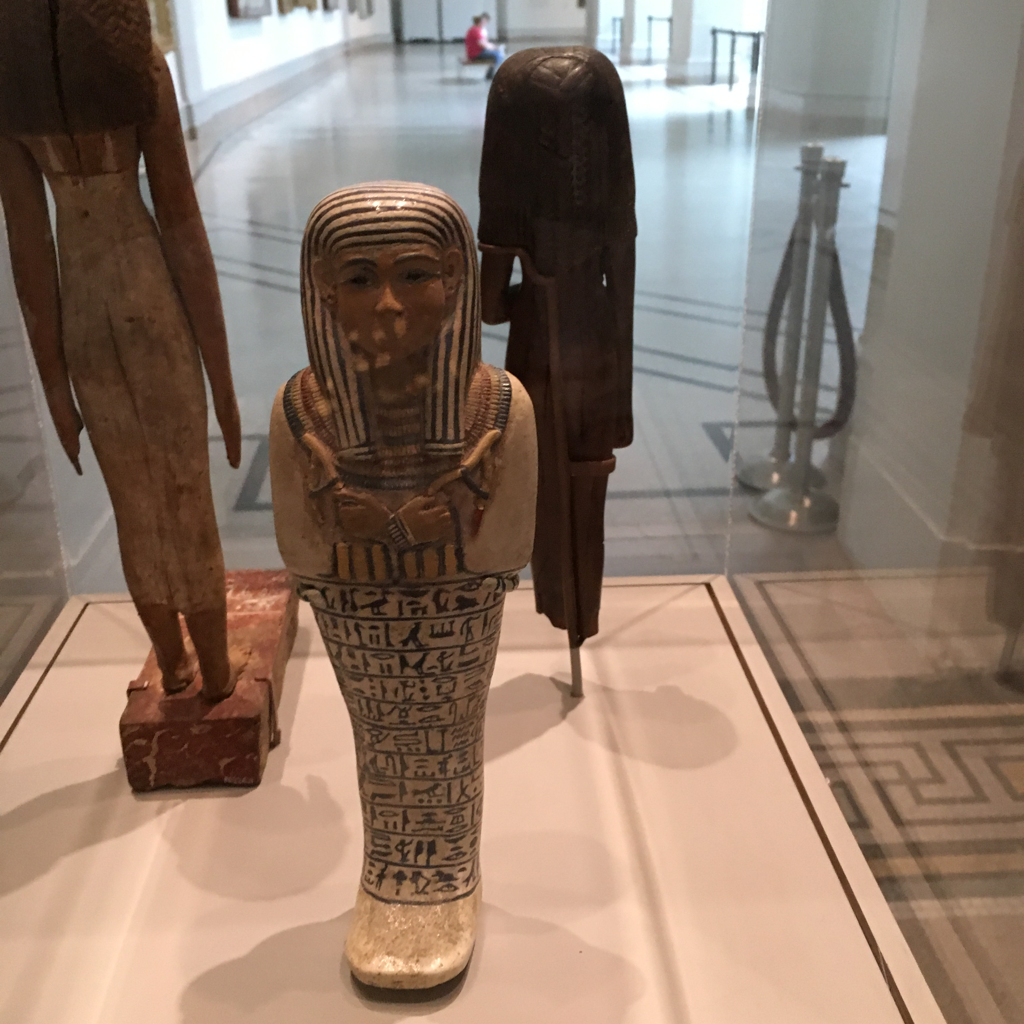
These are shabties and they were made for a tomb! The Egyptian afterlife was seen as being similar to this current life, so a person would have a job and needs things like food. A shabty, once inscribed properly, would be able to do the work in the place of a person. So it could do their housework or farming.
I'm interested in the description behind this piece; but confused about the afterlife and coloring of gender. Is the transition of gender a disguise into the afterlife? What is the reason of gender coloring?

There are a couple of things at play here. First, the coloring is typical in Egyptian art overall. Women are usually shown with whiteish-yellow skin and men are usually shown with reddish-orange skin.
The main gender transformation is understood as a temporary part of the journey to the afterlife. The woman transforms into a man to conceive herself so she can be reborn into the afterlife and live out eternity as a woman.
The coloring on this shabty, however, likely has more to do with the role of the shabty. They were believed to come to life in the afterlife and help the deceased, especially with agriculture and manual labor.
Ah I see; thank you for clarifying!
Tell me more.

This is a Shabty of the Lady of the House Sati! A shabty would perform work assigned to the deceased in the next world, which mirrored almost exactly the world of the living.
This is one of the finest funerary figures ever made and one of few polychrome faience examples. Because it would have taken such a long time to make it would be easy to assume that it belonged to a royal or high-ranking official. Surprisingly, Sati is neither.
Tell me more.
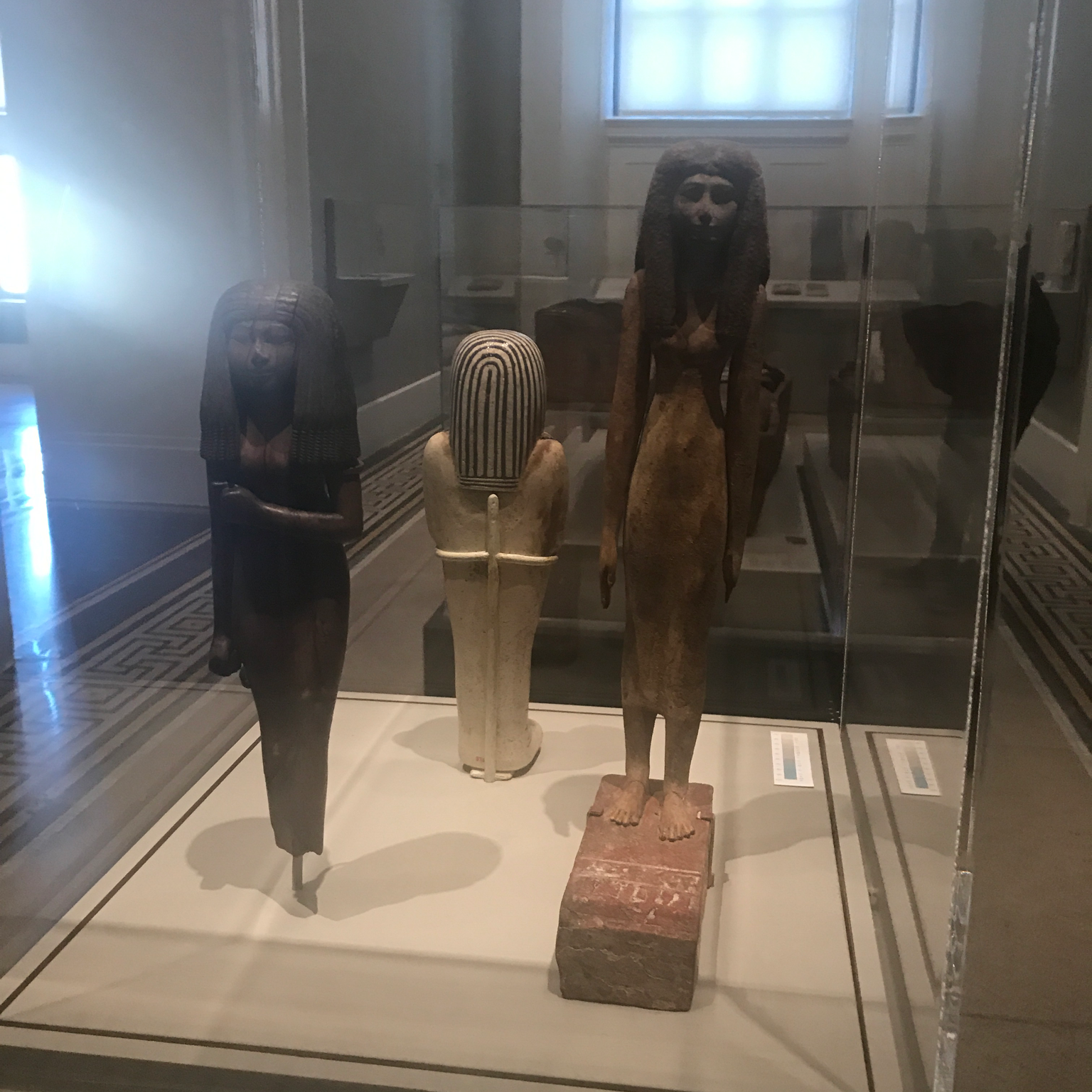
These three figures all show off a common feature for both men and women in ancient Art: elaborate hairstyles including wigs and extensions!
These hairstyles were seen as a sign of beauty in ancient Egypt. We actually have mummified hair extensions in the gallery with Senwosret III that you should check out if you're interested.
